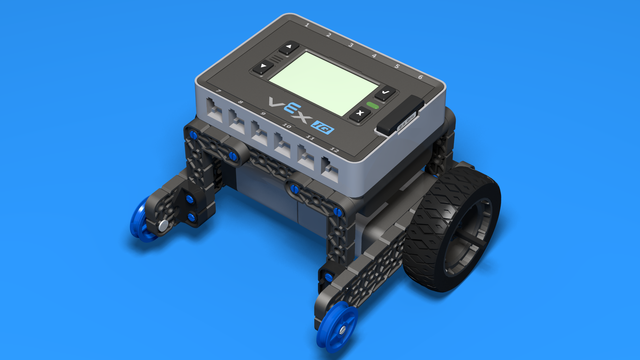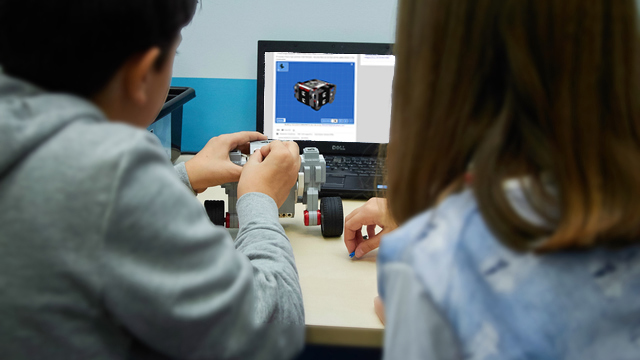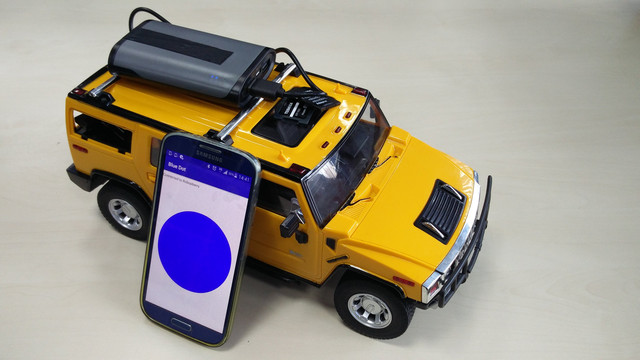
FTC cut template for a pipe to collect and store balls
Drawing on how to cut a pipe to be able to collect and store balls in this pipe. The sheet format is ISO A4 and the drawing size is real (100% scale)
- #283
- 02 Jun 2017
- 7

Drawing on how to cut a pipe to be able to collect and store balls in this pipe. The sheet format is ISO A4 and the drawing size is real (100% scale)

These are buliding instructions for the FTC robot and collecting attachments with it. We are doing small modifications of the push bot.

VEX IQ version of an Easy Bot. It's simple and appropriate for classes of students.

It's the second version of VEX IQ Easy Bot. It's simple as the first one, but the motors are rotated.

It's the third version of the VEX IQ Easy Bot with rotated Robot Brain and castor wheel.

Use this handout material to learn more about the game and how to play it

It's the second version of the Robot Base 4, but with rotated inside motor.

Vex IQ robot base which could be used with different attachments. The gravity center of this robot is in the backside and it has a lot of space in front for attachments.

This is the second version of the EV3 Easy Bot. The robot is used in classes with students as one of the first robots to be built. Easy to follow and to arrive at a construction even for first-time students.

If you are working with students and you want to introduce Robotics to your class or you want to mentor a FLL team, but you are insecure about your technical knowledge in the Robotics field, then this is the right place for you. Having in mind teachers' busy schedule, we have design two different schedules and added an option to design one just for you. FLLCasts's Mindstorms EV3 Robotics Online Training is the perfect match for any teacher.
After the completion of each task the participant has to upload his solution for verification.

This is a Material supplementing the Instructors training course. Attached is our methodology for working with students. If you spend some time to read it beforehand, we can discuss only the questions that you have, instead of listening to the whole thing. That will be a more efficient usage of our time in the training.

The first thing every student wants to build is a LEGO Mindstorms EV3 robot with treads. Well, we have one. Take a look. It's really funny.
Can you make it move? Send us a video or picture in the comment section below.

Disassemble a remote control car. Change the brain of the car with a smart computer like Raspberry Pi. Build a smart device with artificial intelligence that you could control from your phone and that could freely navigate itself in the real world and on the Internet. Use your hands. Develop programs for your robot and your phone. Be curious and invent.
The perfect course lives up to its name. You move through the content, we check it and return feedback to you.
In the end, you should be able to better understand how to program and design smart devices that would make the world a better place. For everybody age 12+, 16+, 21+, 35+, etc. The hardware costs about 150$. It changes through the years so it might take some time for you to find it as Raspberry PI, motor drivers, power banks and h-bridges.. they change. Note that the course was designed to be led by a teacher with a decent knowledge in embedded hardware and software. This, on the other hand should not stop you, if you are curious.

Building instructions for the robot build with LEGO Mindstorms EV3. It is called "Frankenstein" because the two motors are in two different directions.

Building instructions for a LEGO Mindstorms Robot that cleans the landing site when landing on a different planet. Built from an EV3 set it is a perfect simple tank robot with continuous tracks for lifting and moving things. Basically cleaning.

"How do you build a forklift using only gear wheels and levers without a rake"... Ok, we would admit that is a difficult question. It even sounds difficult. So let's start with something easy. A LEGO Mindstorms EV3 robot. It lifts objects in the air. It uses two gear wheels that work together and then move in different directions and are placed perpendicular to each other... This sentence kind of got difficult again... Let me try again.
Follow the building instructions with these 70+ steps and you will have a very nice robot and you will learn a simple trick of how to use gears and change the directions in which they rotate.